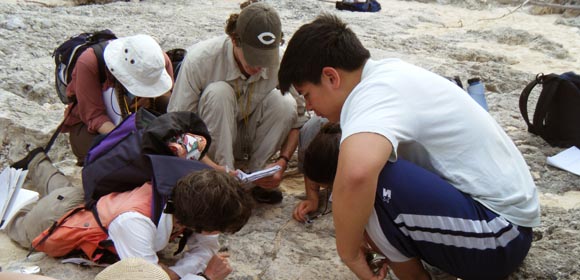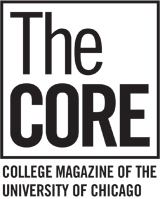
Editor's Note
Our Eyes and Ears
When we first looked into covering a spring break research trip to San Salvador Island ("School for Sandals”), we had plenty of volunteers to report and photograph the story, but little budget to send them. Then Mike LaBarbera and Sue Kidwell, the professors who have run the Geosci 29002 trip for years, pointed out that we had something better: 25 pairs of alert eyes and ears, each attached to a unique perspective and some in possession of excellent camera skills.
So when the third week of March rolled around, 13 undergraduate and 12 graduate students set out for the Bahamas with an extra assignment. Each of them owed the Core one e-mail describing an aspect of the trip: anything from the science to the landscape to the fauna to the food. Practically aglow, these hit my in-box at the rate of three to four a day for the duration of spring break, making Chicago feel a little grayer than usual. When everyone was back in town, teaching assistant Mara Brady collected more than 1,000 pictures taken by seven different photographers for us to choose from.
When students enroll in Modern and Ancient Environments, they aren’t automatically admitted to the trip. The application process is designed to identify those who show a real interest in the natural world, in learning field methods, and in taking on independent research. It doesn’t hurt to be able to swim, or at least be comfortable in the water, where they’ll venture to study living coral reefs. The College dean’s office and a Department of Geophysical Sciences endowment substantially subsidize the travel and lodging of those who are accepted, bringing the total out-of-pocket cost to roughly $400 per student.
Why the Bahamas? The trip builds up to two intense final days devoted to independent field research projects (and more time back in Chicago writing up the results). Tiny San Salvador Island, Kidwell says, is “a candy shop of understudied features and basic research opportunities. Realizing that not all questions have been answered, and that many questions haven’t even been asked yet, is a wonderful, liberating moment in becoming a scientist. Plopping down students on this island and giving them a chance to discover a question and develop an original answer is our way of helping them see the world as their oyster.”—Laura Demanski, AM'94
